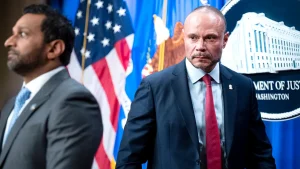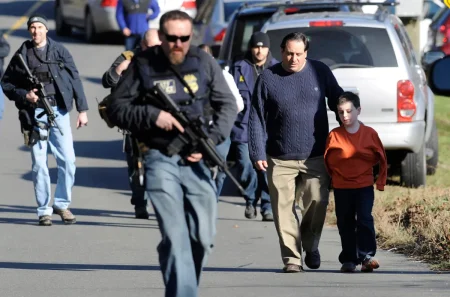A Mother’s Journey with Her Autistic Son: Finding Heroes in the School System
In the chaotic world of parenting a child with special needs, Kennedy Stephenson discovered both challenges and unexpected allies while raising her son CJ, who is currently in first grade. As a Michigan mother of two, Stephenson had long suspected her son was “different,” but it wasn’t until October that he was formally diagnosed with autism, ADHD, and trauma. The journey to this diagnosis was difficult, with CJ exhibiting significant behavioral challenges that impacted his educational experience. “He had a lot of big behaviors and he had a very hard time socializing,” Stephenson explained. His kindergarten year proved particularly challenging as CJ struggled with aggression, activity refusal, wandering within the school building, and an inability to sit still. These issues led to him being suspended ten times during that single school year—a startling statistic that highlights how traditional school environments can sometimes fail children with neurodivergent conditions.
The family’s efforts to support their son were comprehensive and exhaustive. They explored various medications, enrolled him in different therapies, and signed him up for extracurricular activities like martial arts to help channel his energy constructively. Unfortunately, CJ was often asked to leave these programs due to behavioral issues, creating a disheartening pattern of rejection that many parents of autistic children recognize all too well. The statistics from the CDC, which estimates that 4 out of every 100 boys in the U.S. have autism, and the Department of Education’s finding that only 74 percent of autistic students graduate with a diploma (compared to 86 percent of all students), underscore the systemic challenges facing children like CJ. These numbers reveal not just individual struggles but a broader societal failure to adequately accommodate neurodivergent learners in educational settings.
Amid these challenges, a beacon of hope emerged in the form of CJ’s kindergarten teacher. Unlike others who had given up on the young boy, this educator demonstrated extraordinary commitment to understanding and supporting him. “His kindergarten teacher was one of the only ones who stuck by him through all of this and advocated for him so he could get extra support in school,” Stephenson shared with evident gratitude. This teacher went far beyond typical professional responsibilities, emailing the family daily, meeting with them to hear CJ’s story, and creating a personalized reward system tailored to his needs. Perhaps most significantly, she helped the family secure an Individual Education Plan (IEP) that provided crucial accommodations like alternative seating options, fidget tools, a comprehensive behavior plan, and eventually, a one-on-one aide.
The impact of this dedicated support, combined with finding the right medication and therapy approaches, transformed CJ’s educational experience. The final months of his kindergarten year showed remarkable improvement, and he successfully completed the grade—a milestone that had once seemed unattainable. When it came time to transition to first grade, Stephenson naturally worried about leaving behind this supportive teacher. However, this extraordinary educator continued to be present in CJ’s life, visiting their home several times during the summer and attending an art show the family organized to celebrate CJ’s creative work. This level of personal investment demonstrates how individual educators can become lifelines for families navigating the complexities of raising children with special needs, creating continuity and stability during potentially disruptive transitions.
A particularly poignant illustration of this teacher’s dedication occurred one day when Stephenson had just dropped CJ off at school. Shortly after saying goodbye, a fire alarm triggered a school evacuation, and Stephenson watched anxiously as children poured out of the building. Her son, who is easily overwhelmed by sensory stimulation like loud alarms and who sometimes exhibits “eloping” behavior (wandering or running away), was nowhere to be seen among the evacuating students. As moments passed and nearly everyone had exited the building, Stephenson’s mind raced with worst-case scenarios—CJ running unsupervised into traffic, or trapped inside during an actual emergency. Her fears mounted until, in a moment she later captured and shared on TikTok, she spotted CJ’s former kindergarten teacher emerging from the building, holding her son’s hand securely.
This image of CJ’s teacher—whom Stephenson described as looking “like a superhero” as she guided her son to safety while simultaneously directing others—encapsulates the profound impact that dedicated educators can have on vulnerable children and their families. “She knew my son so well. She knew to hold his hand and that he needs that individual attention to be safe. She didn’t leave him behind in the office,” Stephenson explained. This moment, while initially frightening, ultimately affirmed for Stephenson that despite the challenges of raising a child with autism, there are people who genuinely care and will go above and beyond to ensure her son’s wellbeing. As she poignantly stated when sharing this experience on social media, “Parenting a child with autism is often hard and sad. But I want to highlight the amazing moments too. And the amazing people who get us through it.” In a world where the statistics and stories about autism often focus on deficits and challenges, Stephenson’s narrative reminds us of the transformative power of understanding, compassion, and commitment in creating a more inclusive world for neurodivergent children.














